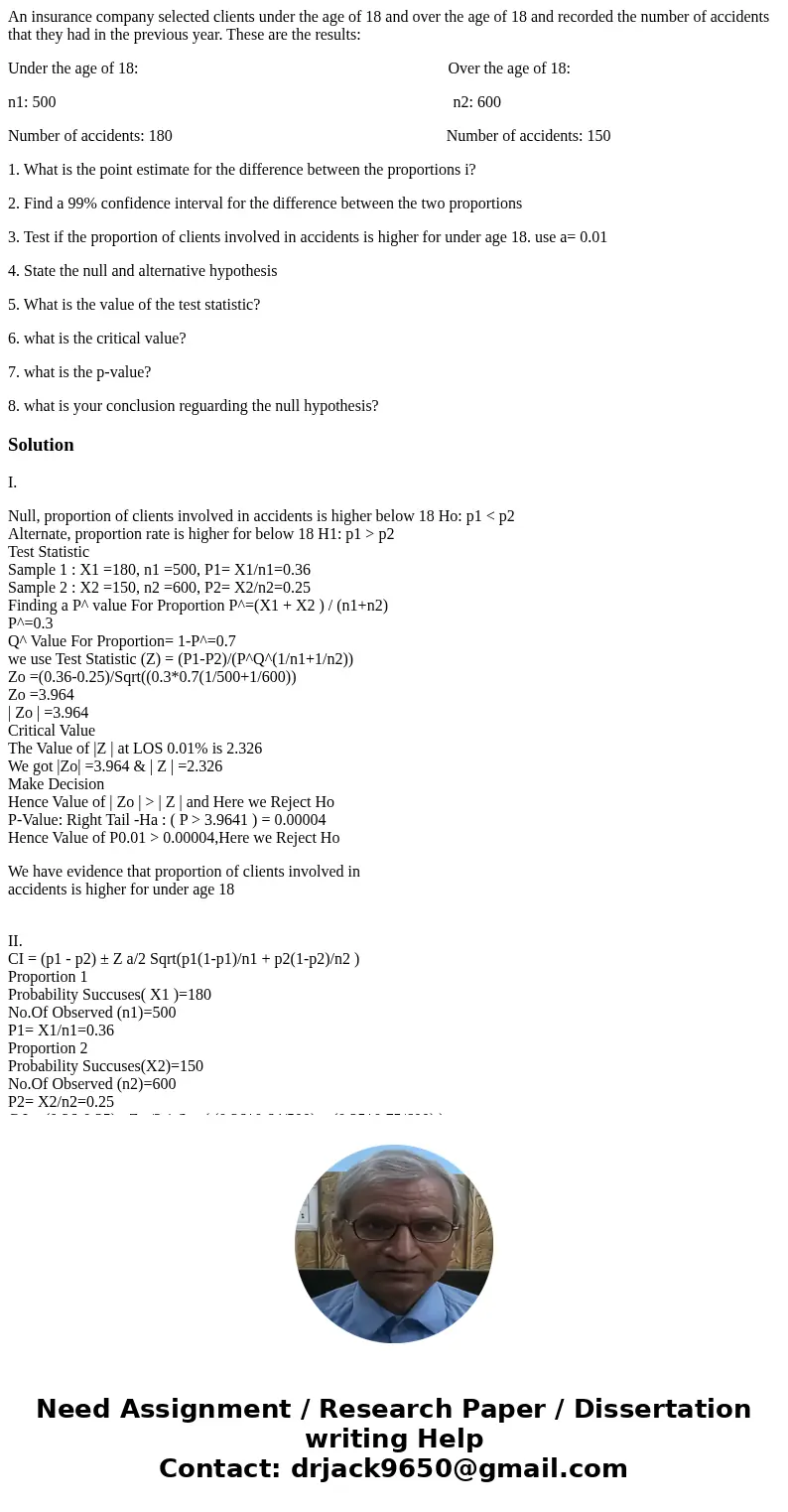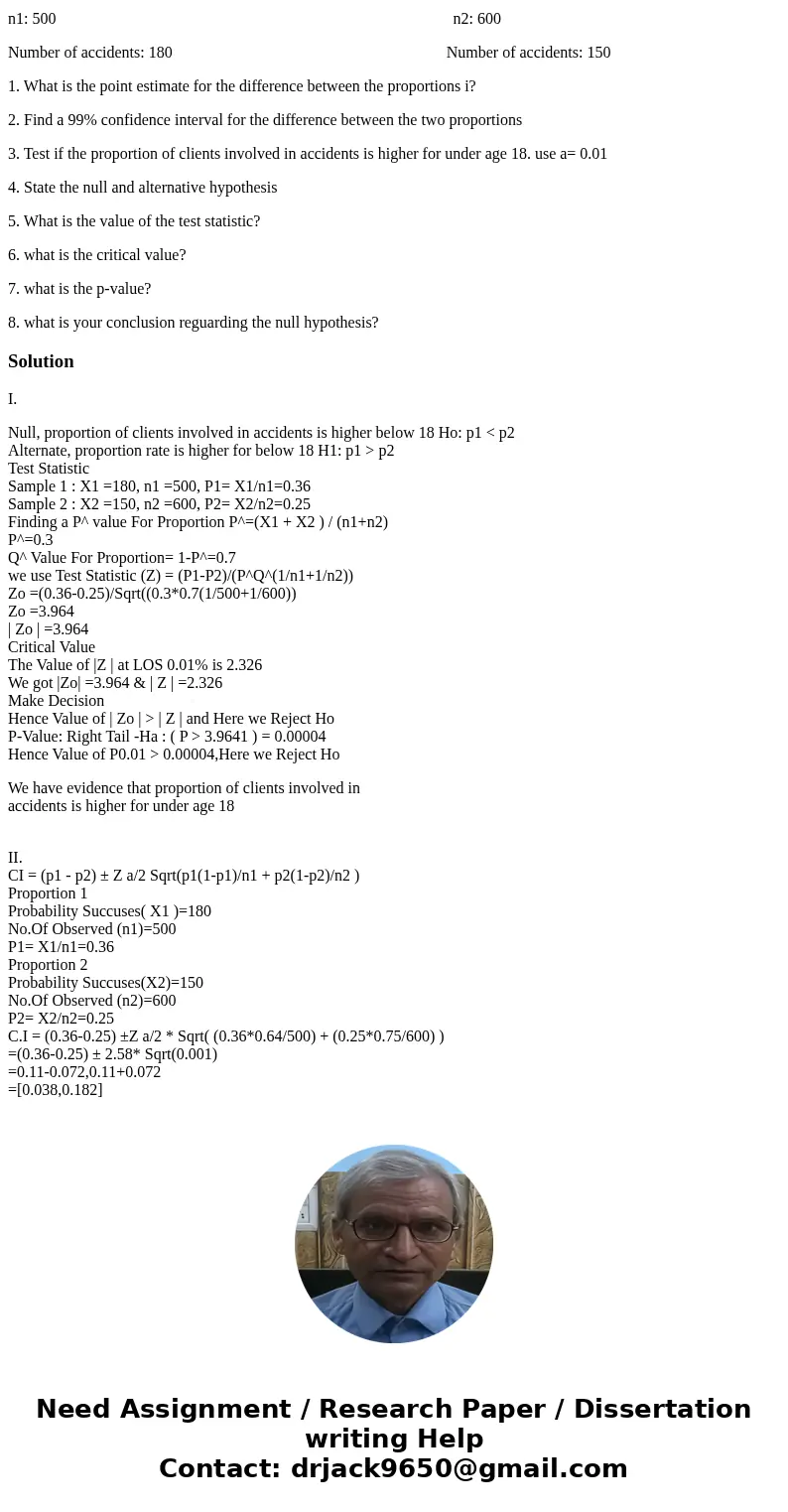An insurance company selected clients under the age of 18 an
An insurance company selected clients under the age of 18 and over the age of 18 and recorded the number of accidents that they had in the previous year. These are the results:
Under the age of 18: Over the age of 18:
n1: 500 n2: 600
Number of accidents: 180 Number of accidents: 150
1. What is the point estimate for the difference between the proportions i?
2. Find a 99% confidence interval for the difference between the two proportions
3. Test if the proportion of clients involved in accidents is higher for under age 18. use a= 0.01
4. State the null and alternative hypothesis
5. What is the value of the test statistic?
6. what is the critical value?
7. what is the p-value?
8. what is your conclusion reguarding the null hypothesis?
Solution
I.
Null, proportion of clients involved in accidents is higher below 18 Ho: p1 < p2
Alternate, proportion rate is higher for below 18 H1: p1 > p2
Test Statistic
Sample 1 : X1 =180, n1 =500, P1= X1/n1=0.36
Sample 2 : X2 =150, n2 =600, P2= X2/n2=0.25
Finding a P^ value For Proportion P^=(X1 + X2 ) / (n1+n2)
P^=0.3
Q^ Value For Proportion= 1-P^=0.7
we use Test Statistic (Z) = (P1-P2)/(P^Q^(1/n1+1/n2))
Zo =(0.36-0.25)/Sqrt((0.3*0.7(1/500+1/600))
Zo =3.964
| Zo | =3.964
Critical Value
The Value of |Z | at LOS 0.01% is 2.326
We got |Zo| =3.964 & | Z | =2.326
Make Decision
Hence Value of | Zo | > | Z | and Here we Reject Ho
P-Value: Right Tail -Ha : ( P > 3.9641 ) = 0.00004
Hence Value of P0.01 > 0.00004,Here we Reject Ho
We have evidence that proportion of clients involved in
accidents is higher for under age 18
II.
CI = (p1 - p2) ± Z a/2 Sqrt(p1(1-p1)/n1 + p2(1-p2)/n2 )
Proportion 1
Probability Succuses( X1 )=180
No.Of Observed (n1)=500
P1= X1/n1=0.36
Proportion 2
Probability Succuses(X2)=150
No.Of Observed (n2)=600
P2= X2/n2=0.25
C.I = (0.36-0.25) ±Z a/2 * Sqrt( (0.36*0.64/500) + (0.25*0.75/600) )
=(0.36-0.25) ± 2.58* Sqrt(0.001)
=0.11-0.072,0.11+0.072
=[0.038,0.182]


 Homework Sourse
Homework Sourse